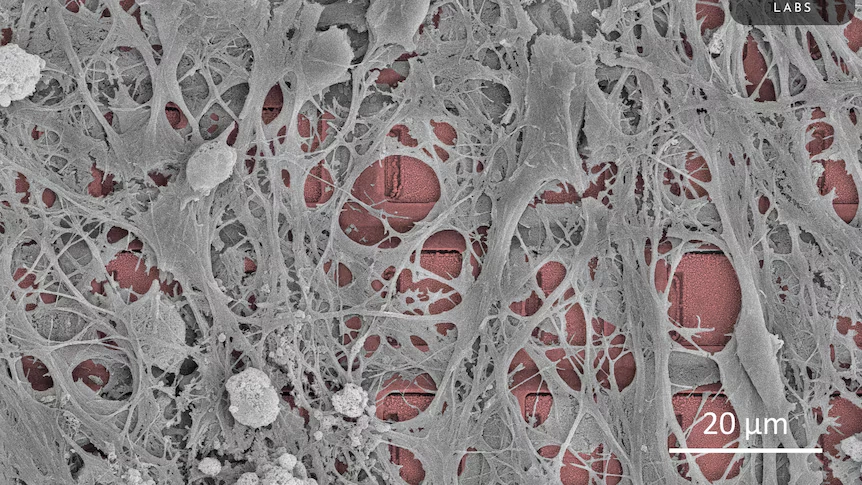"Embrace The Next Evolution"
A Periodic Table for AI: Revolutionizing Machine Learning Discovery

In a groundbreaking development, MIT researchers have unveiled a novel framework that's being hailed as a "periodic table" for artificial intelligence (AI) algorithms. This isn't a table of elements in the traditional sense, but rather a structured way to categorize and understand the relationships between different machine learning models. This innovative approach, built on the principles of information contrastive learning (I-Con), promises to streamline AI research, accelerate the discovery of new models, and foster greater collaboration within the AI community.

The I-Con Framework: A Unifying Equation
At the heart of this "periodic table" lies the I-Con framework. The MIT team discovered that a wide array of algorithms, seemingly disparate at first glance, share common underlying mathematical principles. I-Con works by evaluating how much an algorithm's predictions deviate from actual results, effectively measuring its effectiveness. This framework reveals that methods like clustering, spectral graph theory, contrastive learning, dimensionality reduction, and supervised classification can all be viewed as variations of the same fundamental loss function.
This unifying equation describes how algorithms find connections within data and then approximate those connections internally. Each algorithm strives to minimize the difference between the connections it learns and the real connections in the training data. The researchers organized the algorithms into a table based on how data points are connected in real datasets and the primary ways algorithms approximate those connections.
Mapping the AI Landscape
Just as the periodic table organizes elements based on their atomic properties, this AI periodic table categorizes algorithms by their mathematical characteristics. Algorithms with similar features are grouped together, making it easier for researchers to identify the most suitable tools for specific tasks. This systematic organization offers a clearer view of the AI landscape, allowing researchers to:
- Understand the relationships between models: By visualizing the connections between different architectures, researchers can navigate the complex world of AI with greater ease.
- Identify promising areas for innovation: The framework highlights gaps and potential areas for developing new AI models with specific properties, much like the original periodic table guided the discovery of new elements.
- Accelerate AI discovery: By providing a structured way to explore and compare models, researchers can potentially find the right tools for different tasks more quickly and uncover new capabilities.
An Accidental Discovery with Major Implications
The creation of this AI periodic table wasn't a planned endeavor. It emerged from the work of Shaden Alshammari, an MIT graduate student, who noticed similarities between clustering and contrastive learning algorithms. This observation led to the discovery of a shared mathematical structure underlying several machine learning methods.
Alshammari noted that the work presented in the study represents only a fraction of the methods that can potentially be unified with I-Con. The team hopes that this perspective will encourage greater collaboration and analysis across different algorithms and machine learning disciplines.
Blank Spaces and Future Horizons
Like its chemical counterpart, the AI periodic table is not yet complete. It contains blank spaces, representing areas where the connections between certain algorithms and I-Con haven't been fully explored. These gaps signify opportunities for future research and advancements. As new algorithms are developed or existing ones are re-evaluated within this framework, the table will continue to evolve, serving as a valuable resource for AI practitioners for years to come.
A Tool for Discovery and Innovation
The researchers have already demonstrated the practical applications of this framework. By borrowing ideas from contrastive learning and applying them to image clustering, they created a new algorithm that outperformed existing state-of-the-art approaches by 8%. They also used I-Con to show how a data debiasing technique developed for contrastive learning could be used to improve the accuracy of clustering algorithms.
This "periodic table" provides a toolkit for designing new algorithms without needing to rediscover ideas from previous approaches. It encourages researchers to think outside the box and combine ideas in novel ways. The elegant equation at the heart of I-Con, rooted in information science, has the potential to unlock new avenues for discovery and drive significant progress in the field of artificial intelligence.
This innovative framework offers a fresh perspective on AI, promising to enhance both research and practical applications. It serves as a valuable resource for those seeking to understand the complexities of machine learning and develop more effective AI systems.









